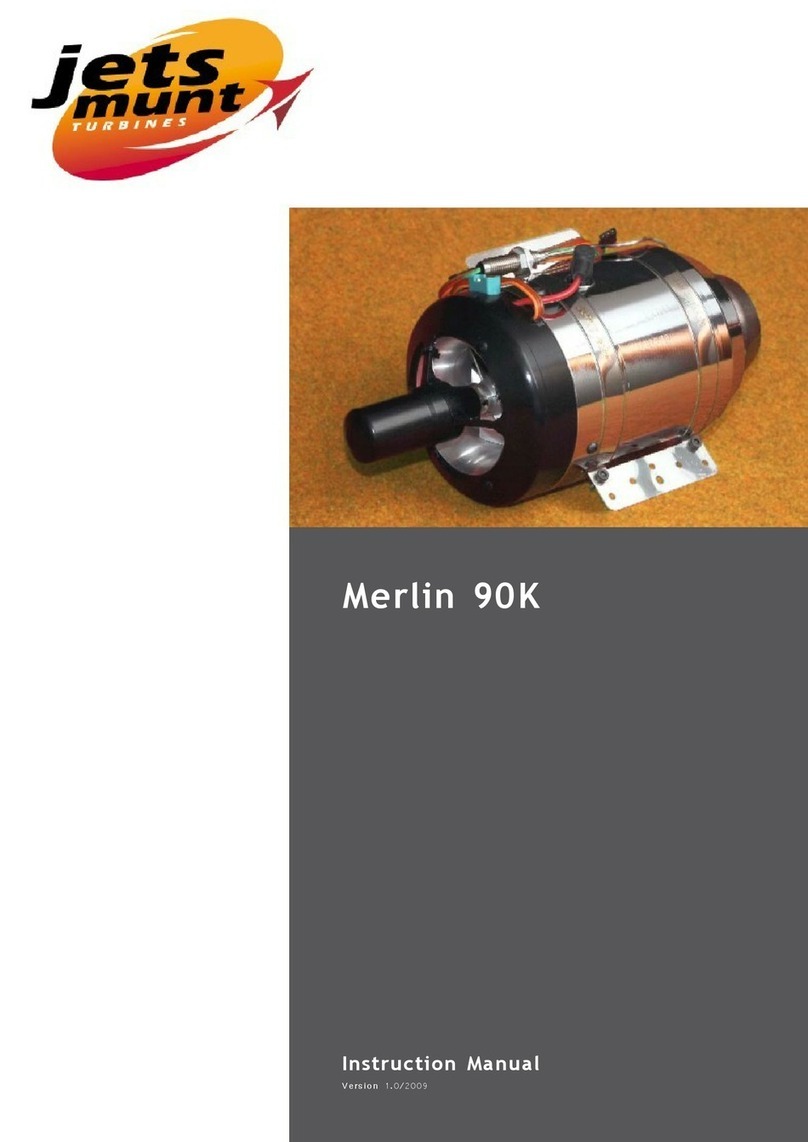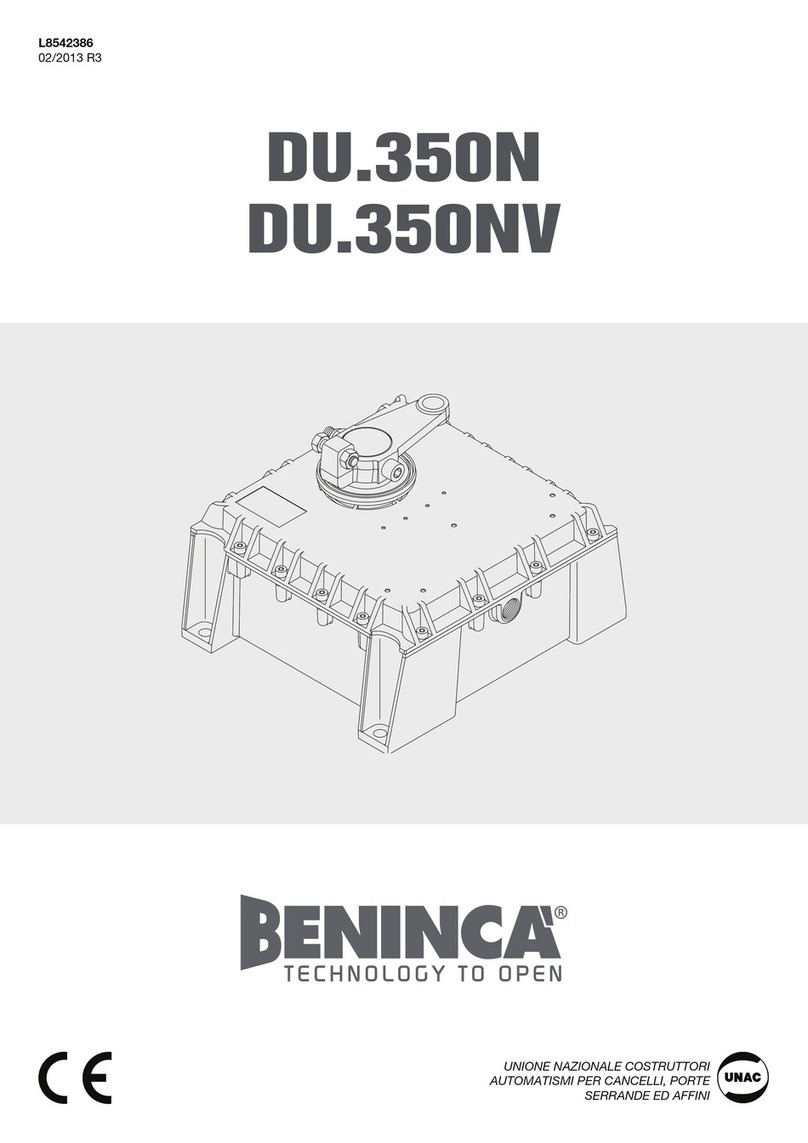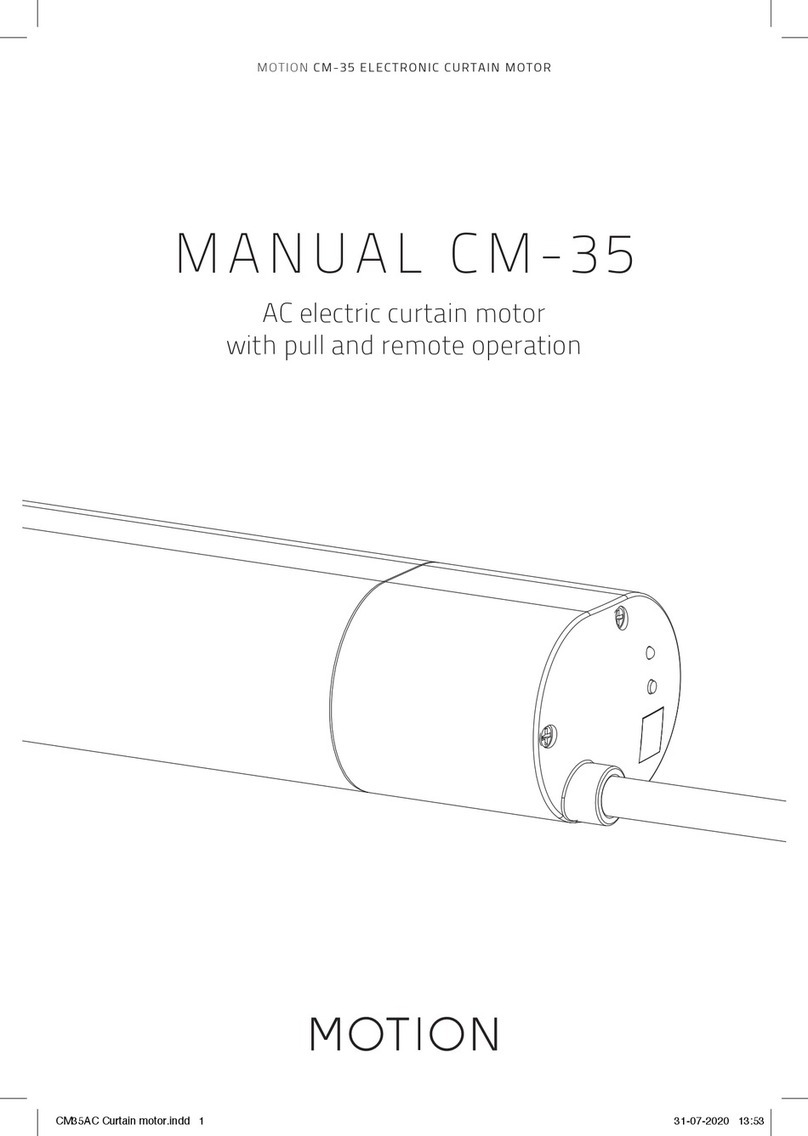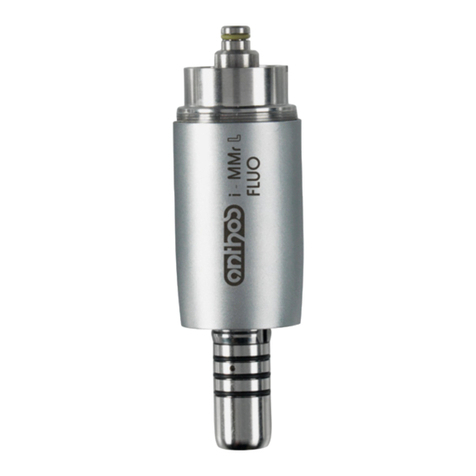BBT BBT-JD420 User manual

OWNER’S MANUAL
Assembly & Operating Instructions
JD 15HP ELECTRIC START ENGINE
MODEL NO. BBT-JD420

2
WWW.BBTA.COM.AU BBT-JD420
To the Owner
Thank you for purchasing our BBT JD 15HP Electric Start Engine. It was carefully engineered to provide excellent
performance when properly operated and maintained.
Please read this entire manual prior to operating the equipment. It instructs you how to safely and easily set
up, operate and maintain your machine. Please be sure that you and any other persons who will operate the
machine carefully follow the recommended safety practices at all times. Failure to do so could result in personal
injury or property damage.
All information in this manual is relative to the most recent product information available at the time of printing.
Review this manual frequently to familiarise yourself with the machine, its features and operation. Please be
aware that this Owner’s Manual may cover a range of product specifications for various models. Characteristics
and features discussed and/or illustrated in this manual may not be applicable to all models. We reserve the right
to change product specifications, designs and equipment without notice and without incurring obligation.
All the power testing information used to establish the power rating of the engine equipped on this machine
can be found in the engine manufacturer’s manual or website. If you have any problems or questions concerning
the machine, please contact our Customer Support Department.
Throughout this manual, all references to right and left side of the machine are observed from the operating
position. The engine manufacturer is responsible for all engine-related issues with regards to performance,
power-rating, specifications, warranty and service. Please refer to the engine manufacturer’s Owner’s Manual
packed separately with your machine for more information.
Customer Support
Please do NOT return the machine without first contacting the Customer Support Department at
bbt@bbta.com.au.
If you have difficulty assembling this product or have any questions regarding the controls, operation, or
maintenance of this machine, please contact our Customer Support Department.
SAVE THESE INSTRUCTIONS

3
WWW.BBTA.COM.AUBBT-JD420
TABLE OF CONTENTS
Page(s)
To the Owner .........................................................................................................................................................2
Customer Support..................................................................................................................................................2
TABLE OF CONTENTS .............................................................................................................................3
IMPORTANT SAFETY INFORMATION .....................................................................................................4
Additional Information and Potential Changes...................................................................................................4
Key to Symbols.......................................................................................................................................................5
ENGINE SAFETY......................................................................................................................................5
PARTS LOCATION....................................................................................................................................6
TECHNICAL INFORMATION ....................................................................................................................7
PRE-OPERATION CHECK ................................................................................................................... 8-10
Engine Oil Level Check ..........................................................................................................................................8
Engine Oil Change .................................................................................................................................................8
Engine Oil Recommendations...............................................................................................................................9
Refuelling ...............................................................................................................................................................9
Fuel Recommendations .......................................................................................................................................10
OPERATION..................................................................................................................................... 11-13
Safe Operating Precautions ................................................................................................................................11
Starting The Engine .............................................................................................................................................11
Stopping The Engine ...........................................................................................................................................13
Setting Engine Speed ..........................................................................................................................................13
SERVICE & MAINTENANCE...................................................................................................................14
Maintenance Safety.............................................................................................................................................14
Maintenance Schedule .......................................................................................................................................14
Air Cleaner Service...............................................................................................................................................15
Sediment Cup Cleaning .......................................................................................................................................15
Spark Plug Service................................................................................................................................................16
Idle Speed Adjustment ........................................................................................................................................16
TROUBLESHOOTING.............................................................................................................................17
Maintenance Schedule .......................................................................................................................................17
STORAGE ........................................................................................................................................ 18-19
Storing Your Engine.............................................................................................................................................18
Engine Oil.............................................................................................................................................................19
Engine Cylinder....................................................................................................................................................19
Storage Precautions.............................................................................................................................................19
Transporting .........................................................................................................................................................19
TECHNICAL INFORMATION ..................................................................................................................20
Wiring Diagrams ..................................................................................................................................................20
SPECIFICATIONS....................................................................................................................................21
WARRANTY & SERVICE ........................................................................................................................21
EXPLODED DIAGRAM & PARTS LIST.............................................................................................. 22-25
YOU MAY ALSO LIKE ...........................................................................................................................26

4
WWW.BBTA.COM.AU BBT-JD420
IMPORTANT SAFETY INFORMATION
Additional Information and Potential Changes
We reserve the right to discontinue, change, and improve our products at any time without notice or obligation
to the purchaser. The descriptions and sections contained in this manual were in effect at the time of printing.
Equipment described within this manual may be optional. Some illustrations may not be applicable to your
machine.
WARNING: Read and thoroughly understand all instructions in this manual and on the safety decals
before assembling or operating this JD 15HP Electric start engine. Failure to do so may cause serious
injury or death. Do not allow anyone to operate this engine who has not read this manual. Do not
operate this engine if you have any questions concerning its safe operation. To get answers to any
questions, call our Customer Support Department.
This SAFETY ALERT SYMBOL identifies important safety messages in this manual. Failure to follow
this important safety information may result in serious injury or death.
The following signals, words and meanings are intended to explain the levels of risk associated with this product.
DANGER indicates a hazardous situation which, if not avoided, will result in serious injury or
death.
WARNING indicates a hazardous situation which, if not avoided, could result in serious injury
or death.
CAUTION indicates a hazardous situation which, if not avoided, could result in minor or
moderate injury.
NOTICE is important information about the proper use of your Lawn Mower. Failure to follow
this instruction could result in damage to your Lawn Mower or property.
WARNING! Your Responsibility—Restrict the use of this power machine to persons who have read,
understood and will follow the warnings and instructions in this manual and on the machine.
SAVE THESE INSTRUCTIONS!

5
WWW.BBTA.COM.AUBBT-JD420
IMPORTANT SAFETY INFORMATION
Key to Symbols
Symbol Description
READ THE OWNER’S MANUAL(S)
Read, understand and follow all instructions in the manual(s) before attempting to
assemble and operate.
BYSTANDERS
Keep bystanders, helpers, pets, and children at least 1 metres from the machine
while it is in operation. Stop machine if anyone enters the area.
PETROL IS FLAMMABLE
Petrol is extremely flammable. Allow the engine to cool for at least ten minutes
before refuelling.
CAUTION! Tool surfaces can be hot.
1M
• The engines are designed to give safe and dependable service if operated according to instructions. Read
and understand this Owner’s Manual before operating the engine. Failure to do so could result in personal
injury or equipment damage.
• To prevent fire hazards and to provide adequate ventilation, keep the engine at least 1 metre (3 feet) away
from buildings and other equipment during operation. DO NOT place flammable objects close to the engine.
• Children and pets must be kept away from the area of operation due to a possibility of burns from hot
components or injury from any equipment the engine may use to operate.
• Know how to stop the engine quickly and understand the operation of all controls. NEVER permit anyone to
operate the engine without proper instruction.
• Petrol is extremely flammable and is explosive under certain conditions.
• Refuel in a well-ventilated area with the engine stopped. DO NOT smoke or allow flames or sparks in the
refuelling area or where fuel is.
• NEVER overfill the fuel tank. After refuelling, make sure the fuel tank cap is closed properly and securely.
• Be careful not to spill petrol when refuelling. Fuel vapour or spilled petrol may ignite. If any petrol is spilled,
wipe it off the engine and equipment and move machine to another area before starting the engine.
• NEVER run the engine in an enclosed or confined area. Exhaust fumes contain carbon monoxide which can
be deadly when inhaled.
• The muffler becomes very hot during operation and remains hot for a while after stopping the engine. Be
careful not to touch the muffler while it is hot.
• To avoid severe burns or fire hazards, let the engine cool before transporting it or storing it indoors. Battery
Connections for Electric Starter (applicable types only)
ENGINE SAFETY
WARNING

6
WWW.BBTA.COM.AU BBT-JD420
PARTS LOCATION

7
WWW.BBTA.COM.AUBBT-JD420
• Use a 12-volt battery with an ampere-hour rating of at least 18 Ah.
• Be careful not to connect the battery in reverse polarity, as this will short circuit the battery charging system.
Always connect the positive (+) battery cable to the battery terminal before connecting the negative (-)
battery cable. Your tools do not cause a short circuit if they touch a grounded part while tightening the
positive (+) battery cable end.
1. Connect the battery positive (+) cable to the starter solenoid terminal as shown.
2. Connect the battery negative (-) cable to an engine mounting bolt, frame bolt, or other good engine ground
connection.
3. Connect the battery positive (+) cable to the battery positive (+) starter solenoid terminal as shown.
4. Connect the battery negative cable (-) to the battery negative terminal as shown.
5. Coat the terminals and cable ends with grease
TECHNICAL INFORMATION
• A battery can explode and cause serious injury to bystanders if you do not follow the correct procedures.
• Keep all sparks, open flames, and smoking materials away from the battery.
WARNING
Battery posts, terminals and related accessories contain lead and lead compounds. Wash hands after
handling.
WARNING

8
WWW.BBTA.COM.AU BBT-JD420
Engine Oil Level Check
Stop the engine, disconnect the spark plug and place engine in a level position before checking the engine oil level.
Remove the filler cap/dipstick and wipe it clean.
1. Insert and remove the dipstick without screwing it into the filler neck. Check the oil level shown on the
dipstick.
2. If the oil level is low, fill to the edge of the oil filler hole with the recommended oil.
3. Screw in the filler cap/dipstick securely.
Running the engine with a low oil level can cause engine damage.
The oil sensor will automatically stop the engine before the oil level falls below safe limit. However, to avoid the
inconvenience of an unexpected shutdown, always check the engine oil level before start-up.
Engine Oil Change
Drain the used oil while the engine is warm. Warm oil drains quickly and completely.
1. Place a suitable container below the engine to catch the used oil, then remove the filler cap/dipstick, drain
plug, and washer.
2. Allow the used oil to drain completely, then reinstall the drain plug, washer, and tighten drain plug securely.
3. Always dispose of any used motor oil in a sealed container at approved recycling centres only. DO NOT throw
it in the trash, pour it on the ground, or down a drain.
4. With the engine in a level position, fill to the outer edge of the oil filler hole with the recommended oil.
5. Screw in the filler cap/dipstick securely.
Running the engine with a low oil level can cause engine damage.
The oil sensor will automatically stop the engine before the oil level falls below the safe limit. However, to avoid
the inconvenience of an unexpected shutdown, fill to the upper limit, and check the oil level regularly.
PRE-OPERATION CHECK

9
WWW.BBTA.COM.AUBBT-JD420
Engine Oil Recommendations
Oil is a major factor affecting performance and service life. Use 4-stroke automotive engine oil.
SAE 30 is recommended for general use. Other viscosities shown in the chart may be used when the average
temperature in your area is within the recommended range.
The SAE oil viscosity and service classification are in the API label on the oil container.
The expert recommends that you use API SERVICE category SJ or SL oil.
Refuelling
Stop the engine, disconnect the spark plug and place engine in a level position before checking the fuel level.
Refill the tank if the fuel level is low.
PRE-OPERATION CHECK
Petrol is highly flammable and explosive.
You can be burned or seriously injured when handling fuel.
• Stop the engine and keep heat, sparks, and flame away.
• Handle fuel only outdoors.
• Wipe up spills immediately.
WARNING

10
WWW.BBTA.COM.AU BBT-JD420
PRE-OPERATION CHECK
Refuel in a well-ventilated area before starting the engine. If the engine has been running, allow it to cool.
Refuel carefully to avoid spilling fuel. DO NOT fill the fuel tank completely.
Fill tank to approximately 1 inch (25 mm) below the top of the fuel tank to allow for fuel expansion. It may be
necessary to lower the fuel level depending on operating conditions.
After refuelling, tighten the fuel tank cap securely.
NEVER refuel the engine inside a building where petrol fumes may reach flames or sparks.
Keep petrol away from pilot lights, barbecues, electric appliances, power tools, etc.
Spilled fuel is not only a fire hazard, it causes environmental damage. Wipe up spills immediately.
Fuel can damage paint and plastic. Be careful not to spill fuel when filling your fuel tank.
Damage caused by spilled fuel is not covered under warranty.
Fuel Recommendations
Use unleaded petrol with an octane rating of 95 or higher.
These engines are certified to operate on unleaded petrol. Unleaded petrol produces fewer engine and spark
plug deposits and extends the exhaust system life.
NEVER use stale or contaminated fuel or an oil/fuel mixture. Avoid getting dirt or water in the fuel tank.
Occasionally you may hear a light “spark knock” or “pinging” (metallic rapping noise) while operating under
heavy loads. This is no cause for concern.
If spark knock or pinging occurs at a steady engine speed, under normal load, change brands of petrol.
Running the engine with persistent spark knock or pinging can cause engine damage.
Running the engine with persistent spark knock or pinging is considered misuse, and the Distributor’s Limited
Warranty does not cover parts damaged by misuse.

11
WWW.BBTA.COM.AUBBT-JD420
Safe Operating Precautions
Before operating the engine for the first time, please review the IMPORTANT SAFETY INFORMATION.
Review the instructions provided with the equipment powered by this engine for any safety precautions that
should be observed in conjunction with engine start-up, shutdown, or operation.
Starting The Engine
1. Move the fuel valve lever to the ON position.
2. To start a cold engine, move the choke lever or choke rod (applicable types) to the CLOSED position.
To restart a warm engine, leave the choke lever in the OPEN position. Some engine applications use a remote-
mounted choke control rather than the engine-mounted choke lever shown here.
3. Move the throttle lever away from the SLOW position, about 1/3 of the way toward the FAST position.
Some engine applications use a remote-mounted throttle control rather than the engine-mounted throttle
lever shown here.
OPERATION
• Engine exhaust contains carbon monoxide, an odourless and deadly gas.
• Avoid any areas or actions that expose you to carbon monoxide.
WARNING
Fuel Valve Lever
Slow Throttle Lever
Choke Lever Choke Rod (Applicable Types)

12
WWW.BBTA.COM.AU BBT-JD420
6. If the choke lever or choke rod (applicable types) has been moved to the CLOSED position to start the engine,
gradually move it to the OPEN position as the engine warms up.
4. Turn the engine switch to the ON position.
5. Operate the starter.
a. RECOIL STARTER (all engine types):
Pull the starter grip lightly until you feel resistance, then pull
briskly. Return the starter grip gently.
OPERATIONS
b. ELECTRIC STARTER (applicable types only):
Turn the key to the START position, and hold it there until the engine starts.
If the engine fails to start within 5 seconds, release the key, and wait at least 10
seconds before operating the starter again.
Using the electric starter for more than 5 seconds at a time will overheat the
starter motor and can damage it.
When the engine starts, release the key, allowing it to return to the ON position.
Starter Grip
Engine Switch Electric Starter Types
All Engines Except
Electric Starter Types
Engine Switch
(Applicable Types Only)
Choke Lever Choke Rod (Applicable Types)

13
WWW.BBTA.COM.AUBBT-JD420
2. Turn the engine switch to the OFF position.
Stopping The Engine
To stop the engine in an emergency, simply turn the engine switch to the OFF position. Under normal conditions,
use the following procedure.
1. Move the throttle lever to the SLOW position.
Some engine applications use a remote-mounted throttle control
rather than the engine-mounted throttle lever shown here.
OPERATIONS
Throttle Lever
Engine Switch
Electric Starter Types
All Engines Except
Electric Starter Types
3. Turn the fuel valve lever to the OFF position.
Setting Engine Speed
Position the throttle lever for the desired engine speed.
Some engine applications use a remote-mounted throttle control
rather than the engine-mounted throttle lever shown here.
For engine speed recommendations, refer to the instructions provided
with the equipment powered by this engine.
Fuel Valve Lever
OFF
SLOW
SLOW

14
WWW.BBTA.COM.AU BBT-JD420
SERVICE & MAINTENANCE
Maintenance Safety
Some of the most important safety precautions are as follows. However, we cannot warn you of every conceivable
hazard that can arise in performing maintenance. Only you can decide whether or not you should perform a
given task.
Safety Precautions
Make sure the engine is OFF before you begin any maintenance or repairs. This will eliminate several potential
hazards:
• Carbon monoxide poisoning from engine exhaust. Be sure there is adequate ventilation whenever you
operate the engine.
• Burns from hot parts. Let the engine and exhaust system cool before touching.
• Injury from moving parts. DO NOT run the engine unless instructed to do so.
• Read, understand, and follow all instructions in this manual before attempting to assemble and operate.
• To reduce the possibility of fire or explosion, be careful when working around petrol. Use only a non-
flammable solvent, not petrol, to clean parts. Keep cigarettes, sparks and flames away from all fuel-related
parts.
To ensure the best quality and reliability, use only new, genuine JD parts or their equivalents for repair and
replacement.
Maintenance Schedule
Each use First month /
20 hours
Every 3 months
/ 50 hours
Every 6 months
/ 100 hours
Every year /
300 hours
•Engine oil
Check level O
Change O O
•Reduction gear oil
(applicable types)
Check level O
Change O O
•Air filter
Check O
Clean O(1) O *(1)
Replace O**
•Sediment cup Clean O
Spark plug
Check and
adjust O
Replace O
Spark arrester
(optional parts) Clean O
•Idle speed Check and
adjust O(2)
•Valve clearance Check and
adjust O(2)
•Combustion chamber Clean After every 500 hours (2)
•Fuel tank & filter Clean O(2)
•Fuel tube Check Every 2 years (Replace if necessary) (2)
• Emission-related items.
• Internal vent carburettor with dual element type only.
• *Replace paper element type only. Cyclone type every 2 years or 600 hours.
1. Service more frequently when used in dusty areas.
2. These items should be serviced by your servicing dealer, unless you have the proper tools and are mechanically proficient.
3. For commercial use, log hours of operation to determine proper maintenance intervals.
• Failure to properly follow maintenance instructions and precautions can cause serious injury or death.
• Always follow the procedures and precautions in the owner’s manual.
WARNING

15
WWW.BBTA.COM.AUBBT-JD420
SERVICE & MAINTENANCE
Air Cleaner Service
A dirty air filter will restrict air flow to the carburettor, reducing engine performance. If you operate the engine
in very dusty areas, clean the air filter more often than specified in the MAINTENANCE SCHEDULE.
Operating the engine without an air filter, or with a damaged air filter, will allow dirt to enter the engine,
causing rapid engine wear. This type of damage is not covered by the Warranty.
Dual-filter-Element Type
Remove the wing nut from the air cleaner cover, and remove the
cover.
1. Remove the wing nut from the air filter, and remove the filter.
2. Remove the foam filter from the paper filter.
3. Inspect both air filter elements, and replace them if they are
damaged. Always replace the paper air filter element at the
scheduled interval.
4. Clean the air filter elements if they are to be reused.
5. Wipe dirt from the inside of the air cleaner base and cover,
using a moist rag. Be careful to prevent dirt from entering the
air duct that leads to the carburettor.
6. Place the foam air filter element over the paper element, and
reinstall the assembled air filter. Be sure the gasket is in place
beneath the air filter. Tighten the air filter wing nut securely.
7. Install the air cleaner cover, and tighten the cover wing nut
securely.
Sediment Cup Cleaning
1. Move the fuel valve to the OFF position, then remove the fuel sediment cup and O-ring.
2. Wash the sediment cup and O-ring in non-flammable solvent,
and dry them thoroughly.
3. Place the O-ring in the fuel valve, and install the sediment cup. Tighten the sediment cup securely.
4. Move the fuel valve to the ON position, and check for leaks. Replace the O-ring if there is any leakage.
Petrol is highly flammable and explosive.
You can be burned or seriously injured when handling
fuel.
• Keep heat, sparks and flame away.
• Handle fuel only outdoors.
• Wipe up spills immediately.
WARNING
Air Filter
Cover
Wing Nut
Form Filter
Grid
Sediment
Cup
O-ring
Drain
Bolt

16
WWW.BBTA.COM.AU BBT-JD420
Spark Plug Service
Recommended spark plugs: BPR6ES (NGK), W20EPR-U (DENSO)
An incorrect spark plug can cause engine damage.
1. Disconnect the spark plug cap, and remove any dirt from
around the spark plug area.
2. Remove the spark plug with a 13/16-inch spark plug
wrench.
3. Inspect the spark plug. Replace it if the electrodes are
worn or heavy carbon build-up is found, or if the insulator
is cracked or chipped.
4. Measure the spark plug electrode gap with a suitable
gauge. The gap should be 0.028-0.031 in (0.70-0.80 mm).
Correct the gap, if necessary, by carefully bending the
side electrode.
5. Install the spark plug carefully, by hand, to avoid cross-
threading.
6. After the spark plug seats, tighten with a 13/16-inch
spark plug wrench to compress the sealing washer.
If reinstalling the used spark plug, tighten 1/8—1/4 turn
after the spark plug seats.
If installing a new spark plug, tighten 1/2 turn after the
spark plug seats.
A loose spark plug can overheat and damage the engine.
Over tightening the spark plug can damage the threads in the cylinder head.
7. Attach the spark plug cap.
Idle Speed Adjustment
1. Start the engine outdoors, and allow it to warm up to operating temperature.
2. Move the throttle lever to its slowest position.
3. Turn the throttle stop screw to obtain the standard idle speed.
Standard idle speed: 1,400 ± 150 rpm
SERVICE & MAINTENANCE
Spark plug
Wrench
Sealing
Washer
Throttle stop screw
0.028-0.031 in
(0.70-0.80 mm)

17
WWW.BBTA.COM.AUBBT-JD420
TROUBLESHOOTING
Maintenance Schedule
Engine will not start Possible cause Correction
1. Electric starting (applicable
types): Check battery and fuse
Discharged Recharge battery
Fuse burnt out Replace fuse
2. Check control positions
Fuel valve OFF Move lever to ON
Choke OPEN Move lever to CLOSED unless
engine is warm
Engine switch OFF Turn engine switch to ON
3. Check fuel
Out of fuel Refuel
Bad fuel; engine stored without
treating or draining petrol, or
refuelled with bad petrol.
Drain fuel tank and carburettor
Refuel with fresh petrol
4. Remove and inspect spark plug.
Spark plug faulty, fouled, or
improperly gapped Gap, or replace spark plug
Spark plug wet with fuel (flooded
engine).
Dry and reinstall spark plug. Start
engine with throttle lever in FAST
position.
5. Take engine to an authorized JD
servicing dealer, or refer to shop
manual.
Fuel filter clogged, carburettor
malfunction, ignition malfunction,
valves stuck etc.
Replace or repair faulty
components as necessary.
Engine lacks power Possible cause Correction
1. Check air filter Filter element(s) clogged. Clean or replace filter elements
2. Check fuel
Bad fuel; engine stored without
treating or draining petrol, or
refuelled with bad petrol.
Drain fuel tank and carburettor
Refuel with fresh petrol.
3. Take engine to an authorized JD
servicing dealer, or refer to shop
manual.
Fuel filter clogged, carburettor
malfunction, ignition malfunction,
valves stuck, etc.
Replace or repair faulty
components as necessary.

18
WWW.BBTA.COM.AU BBT-JD420
Storing Your Engine
Storage Preparation
Proper storage preparation is essential for keeping your engines trouble free and looking good. The following
steps will help to keep rust and corrosion from impairing your engine’s function and appearance, and will make
the engine easier to start after storage.
Cleaning
If the engine has been running, allow it to cool for at least half an hour before cleaning. Clean all exterior
surfaces, touch up any damaged paint, and coat other areas that may rust with a light film of oil.
• Using a garden hose or pressure washing equipment can force water into the air cleaner or muffler opening.
Water in the air cleaner will soak the air filter, and water that passes through the air filter or muffler can
enter the cylinder, causing damage.
• Water contacting a hot engine can cause damage. If the engine has been running, allow it to cool for at least
half an hour before washing.
Petrol will oxidise and deteriorate in storage. Old petrol will cause hard starting, and it leaves gum deposits that
clog the fuel system. If the fuel in your engine deteriorates during storage, you may need to have the carburettor
and other fuel system components serviced or replaced.
The length of time that petrol can be left in your fuel tank and carburettor without causing functional problems
will vary with such factors as fuel blend, your storage temperatures, and whether the fuel tank is partially
or completely filled. The air in a partially filled fuel tank promotes fuel deterioration. Very warm storage/
temperatures accelerate fuel deterioration. Fuel deterioration problems may occur within a few months, or even
less if the petrol was not fresh when you filled the fuel tank.
The Distributor’s Limited Warranty does not cover fuel system damage or engine performance problems resulting
from neglected storage preparation.
You can extend fuel storage life by adding a fuel stabilizer that is formulated for that purpose, or you can avoid
fuel deterioration problems by draining the fuel tank and carburettor.
Adding A Fuel Stabilizer To Extend Fuel Storage Life
When adding a fuel stabilizer, fill the fuel tank with fresh petrol. If only
partially filled, air in the tank will promote fuel deterioration during
storage. If you keep a container of petrol for refuelling, be sure that it
contains only fresh petrol.
1. Add fuel stabilizer following the manufacturer’s instructions.
2. After adding a fuel stabilizer, run the engine outdoors for 10 minutes
to be sure that treated petrol has replaced the untreated petrol in the
carburettor.
3. Stop the engine, and move the fuel valve lever to the OFF position.
Draining The Fuel Tank And Carburettor
1. Place an approved fuel container below the carburettor, and use a
funnel to avoid spilling fuel.
2. Remove the carburettor drain bolt and sediment cup, then move the fuel valve lever to the ON position.
3. After all the fuel has drained into the container, reinstall the drain bolt and sediment cup. Tighten them
securely.
STORAGE
Fuel Valve Lever
Sediment
Cup
Drain
Bolt
Petrol is highly flammable and explosive.
You can be burned or seriously injured when handling
fuel.
• Keep heat, sparks and flame away.
• Handle fuel only outdoors.
• Wipe up spills immediately.
WARNING

19
WWW.BBTA.COM.AUBBT-JD420
Engine Oil
1. Change the engine oil
Engine Cylinder
2. Remove the spark plug
3. Pour a tablespoon (5 - 10 cc) of clean engine oil into the cylinder.
4. Pull the starter rope several times to distribute the oil in the cylinder.
5. Reinstall the spark plug.
6. Pull the starter rope slowly until resistance is felt and the notch on the starter pulley aligns with the hole
at the top of the recoil starter cover. This will close the valves so moisture cannot enter the engine cylinder.
Return the starter rope gently.
Storage Precautions
If your engine is being stored with petrol in the fuel tank and carburettor, it is important to reduce the hazard of
fuel vapour ignition. Select a well-ventilated storage area away from any appliance that operates with a flame,
such as a furnace, water heater, or clothes dryer. Also avoid any area with a spark producing electric motor, or
where power tools are operated.
If possible, avoid storage areas with high humidity, because that promotes rust and corrosion.
Unless all fuel has been drained from the fuel tank, leave the fuel valve lever in the OFF position to reduce the
possibility of fuel leakage.
Position the equipment so the engine is level. Tilting can cause fuel or oil leakage.
With the engine and exhaust system cool, cover the engine to keep out dust. A hot engine and exhaust system
can ignite or melt some materials. Do not use sheet plastic as a dust cover. A nonporous cover will trap moisture
around the engine, promoting rust and corrosion.
If equipped with a battery for electric starter types, recharge the battery once a month while the engine is in
storage. This will help to extend the service life of the battery.
Removal from Storage
Check your engine as described in the BEFORE OPERATION/ON chapter of this manual.
If the fuel was drained during storage preparation, fill the tank with fresh petrol.
If you keep a container of petrol for refuelling, be sure that it contains only fresh petrol. Petrol oxidises and
deteriorates over time, causing hard starting with engine.
If the cylinder was coated with oil during storage preparation, the engine may smoke briefly at start-up. This is
normal.
Transporting
If the engine has been running, allow it to cool for at least 15 minutes before loading the engine-powered
equipment on the transport vehicle. A hot engine and exhaust system can burn you and can ignite some materials.
Keep the engine level when transporting to reduce the possibility of fuel leakage.
Turn the fuel valve lever to the OFF position.
STORAGE

20
WWW.BBTA.COM.AU BBT-JD420
Wiring Diagrams
Oil Sensor and Electric Starter Types
Engine Types With Oil sensor and Without Electric Starter
TECHNICAL INFORMATION
Table of contents
Popular Engine manuals by other brands

Doosan
Doosan GL08K Operation & maintenance manual

Dongfeng Chaoyang Diesel engine Co
Dongfeng Chaoyang Diesel engine Co CYQD 32 Series CYQD32 Service manual
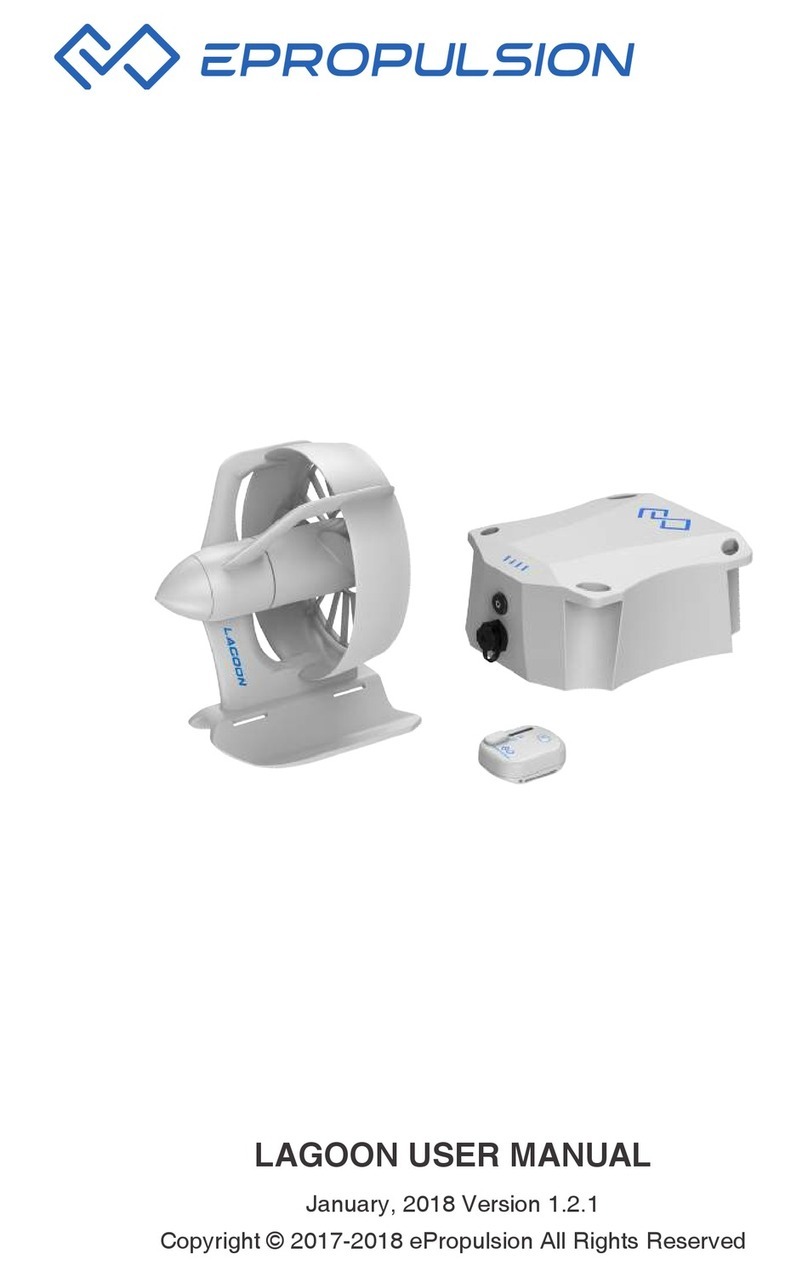
ePropulsion
ePropulsion LAGOON user manual
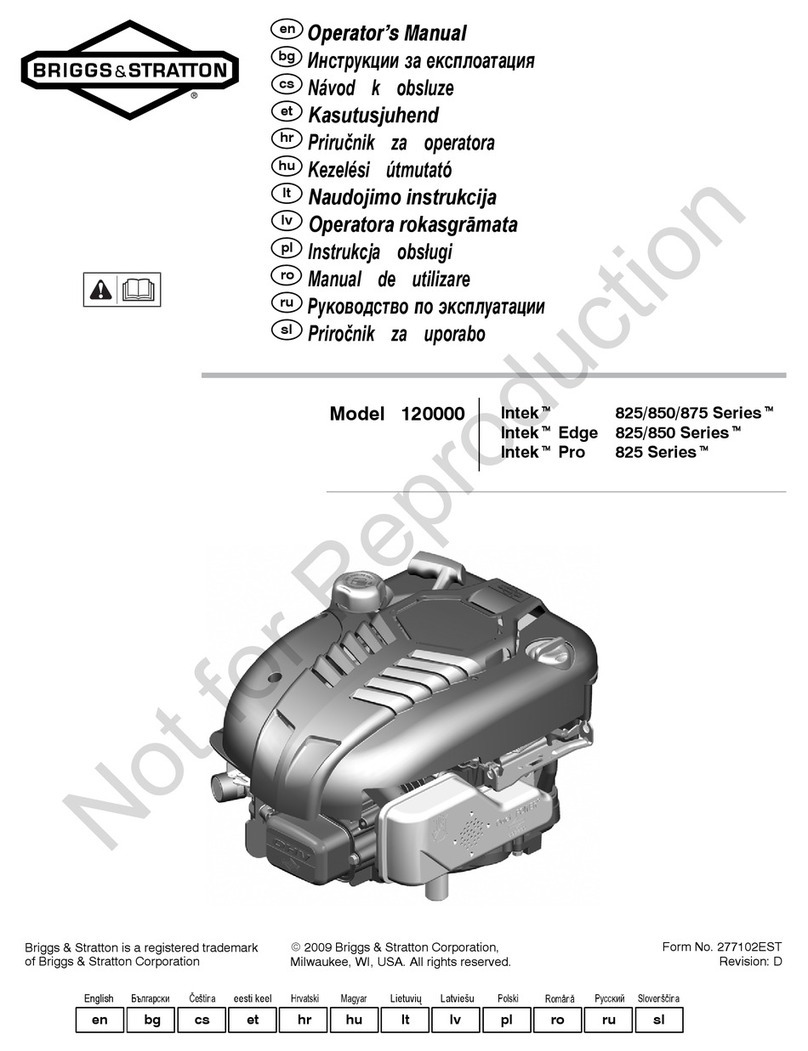
Briggs & Stratton
Briggs & Stratton Intekt 825 Series Operator's manual
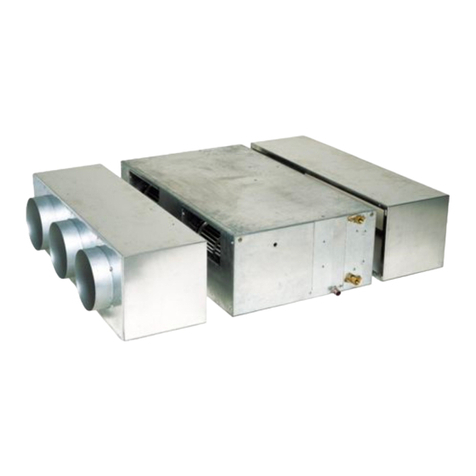
atisa
atisa HF-EC Operating and maintenance manual
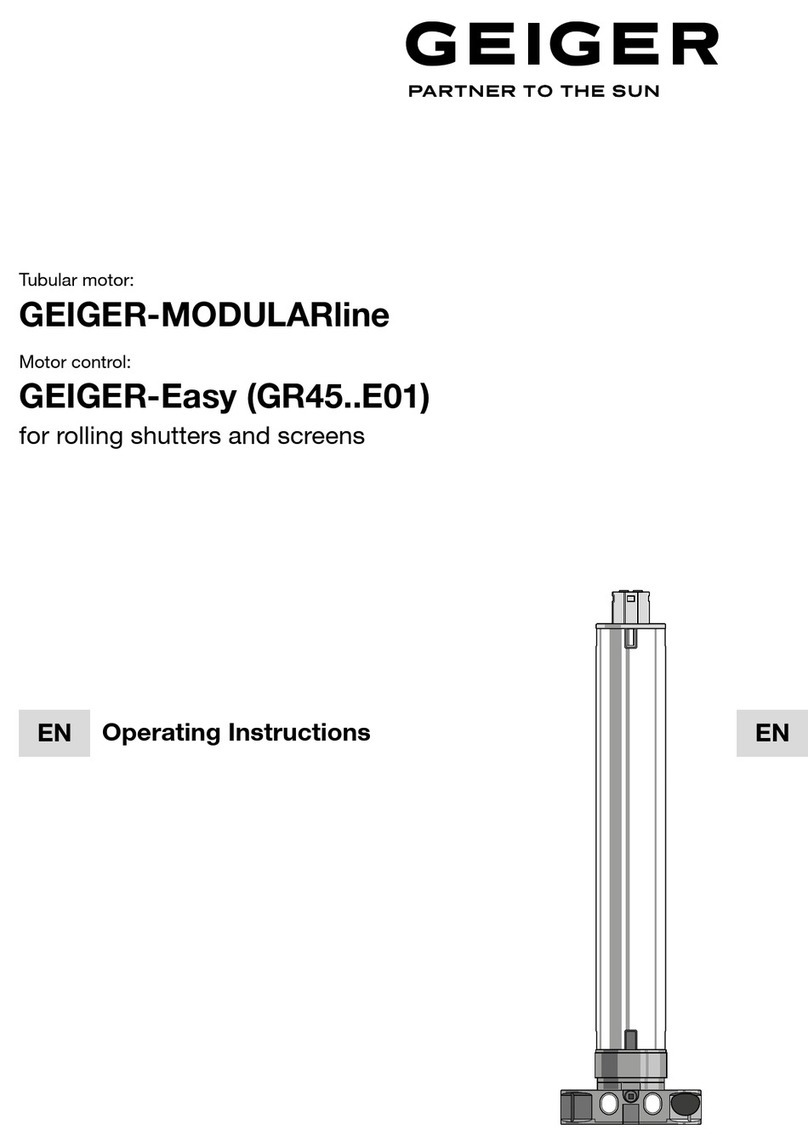
GEIGER
GEIGER GEIGER-MODULARline operating instructions
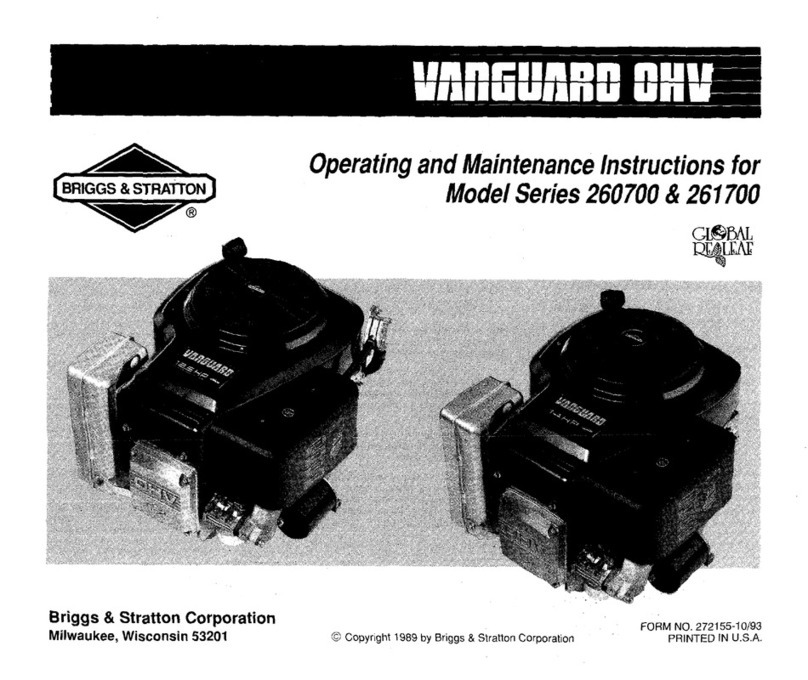
Briggs & Stratton
Briggs & Stratton 260700 Operating and maintenance instructions

Scania
Scania DC09 installation manual
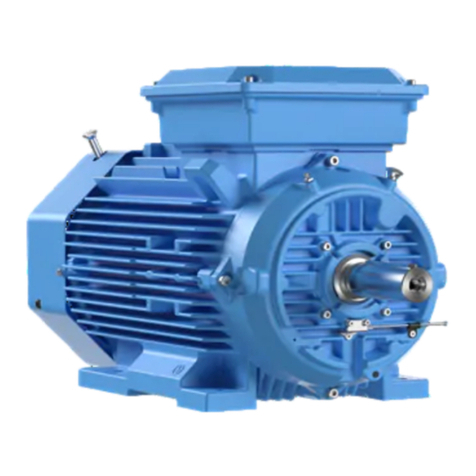
ABB
ABB MT series Installation, operation & maintenance manual

Festo
Festo MTR series operating instructions
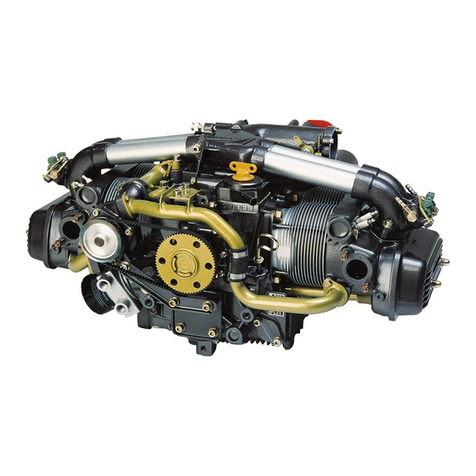
LIMBACH
LIMBACH L 2400 EF Operating and maintenance manual
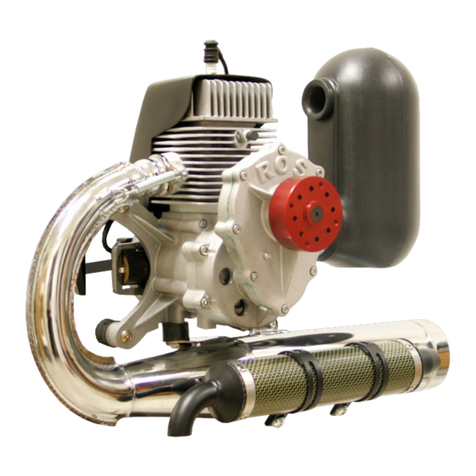
Marc Motor
Marc Motor ROS Series Technical handbook
